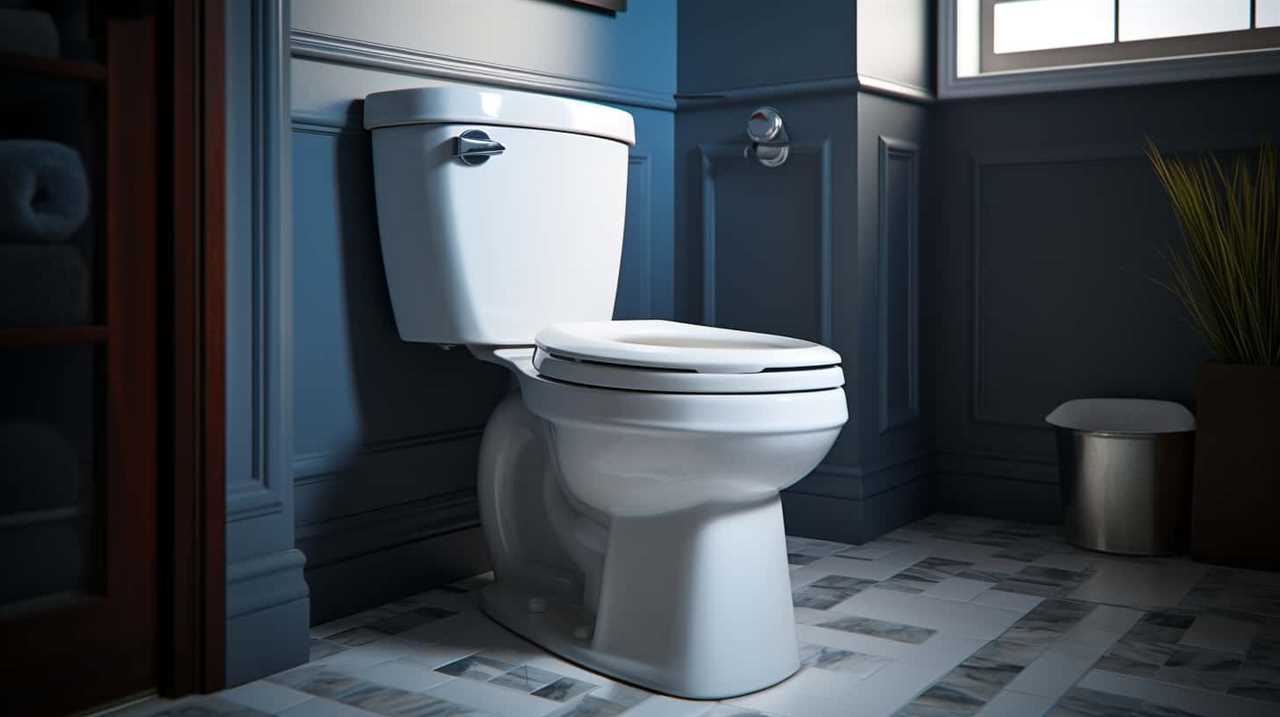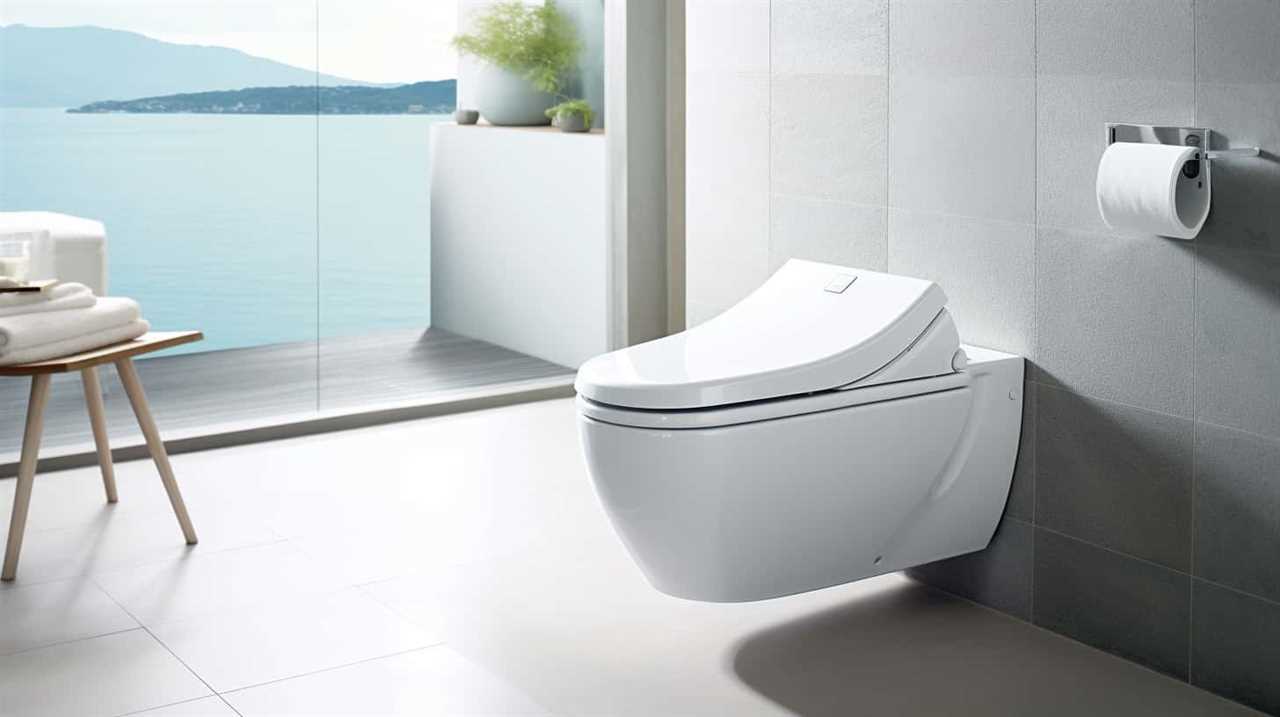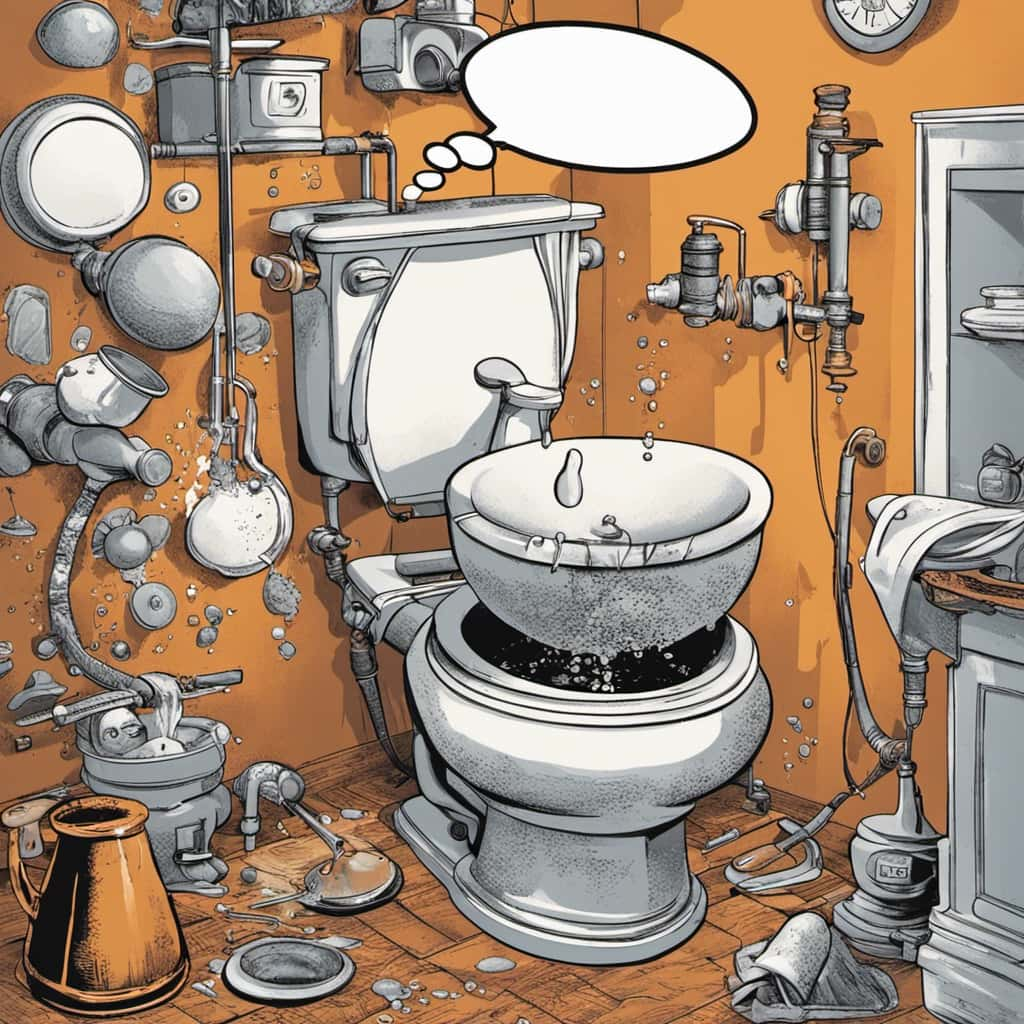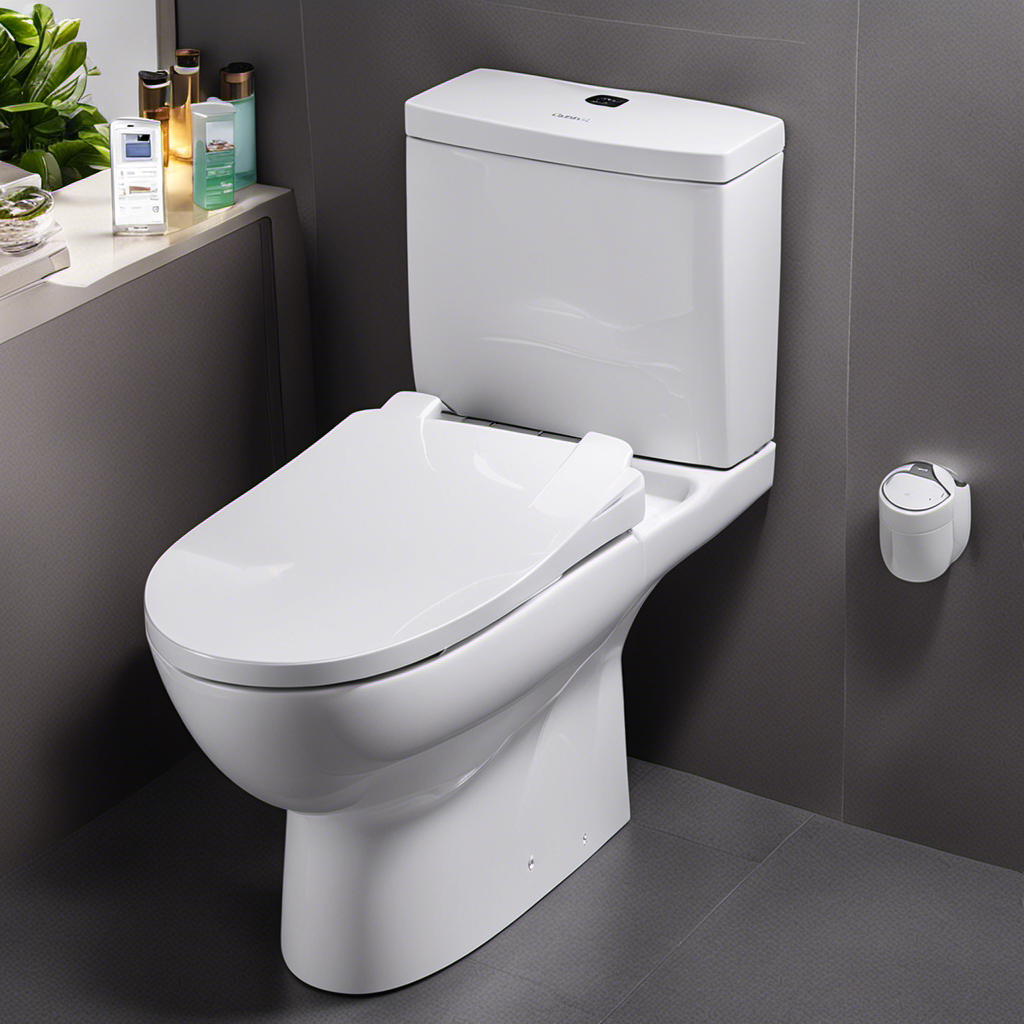We’ve all heard about using vinegar as a natural cleaning solution, but will it damage your toilet tank? Let’s dive into the science and find out.
In this article, we’ll explore the composition of toilet tanks and the cleaning properties of vinegar. We’ll also discuss the potential risks involved and provide tips for safely cleaning your toilet tank with vinegar.
If you’re looking for alternative cleaning solutions, we’ve got you covered too. Get ready to master the art of toilet tank cleaning.
Key Takeaways
- Vinegar contains acetic acid, which can effectively remove stains, limescale, and bacteria from toilet tanks.
- The acidic nature of vinegar makes it a great cleaner for keeping the toilet tank in optimal condition.
- The main risk of using vinegar in toilet tanks is the potential for corrosion and damage to metal components.
- Alternative cleaning solutions such as hydrogen peroxide, baking soda, and citric acid can be used as effective and safer alternatives to vinegar for cleaning toilet tanks.
Understanding the Composition of Toilet Tanks
To fully understand the composition of toilet tanks, we need to examine the materials used in their construction. Toilet tanks are typically made from two common materials: porcelain and plastic.
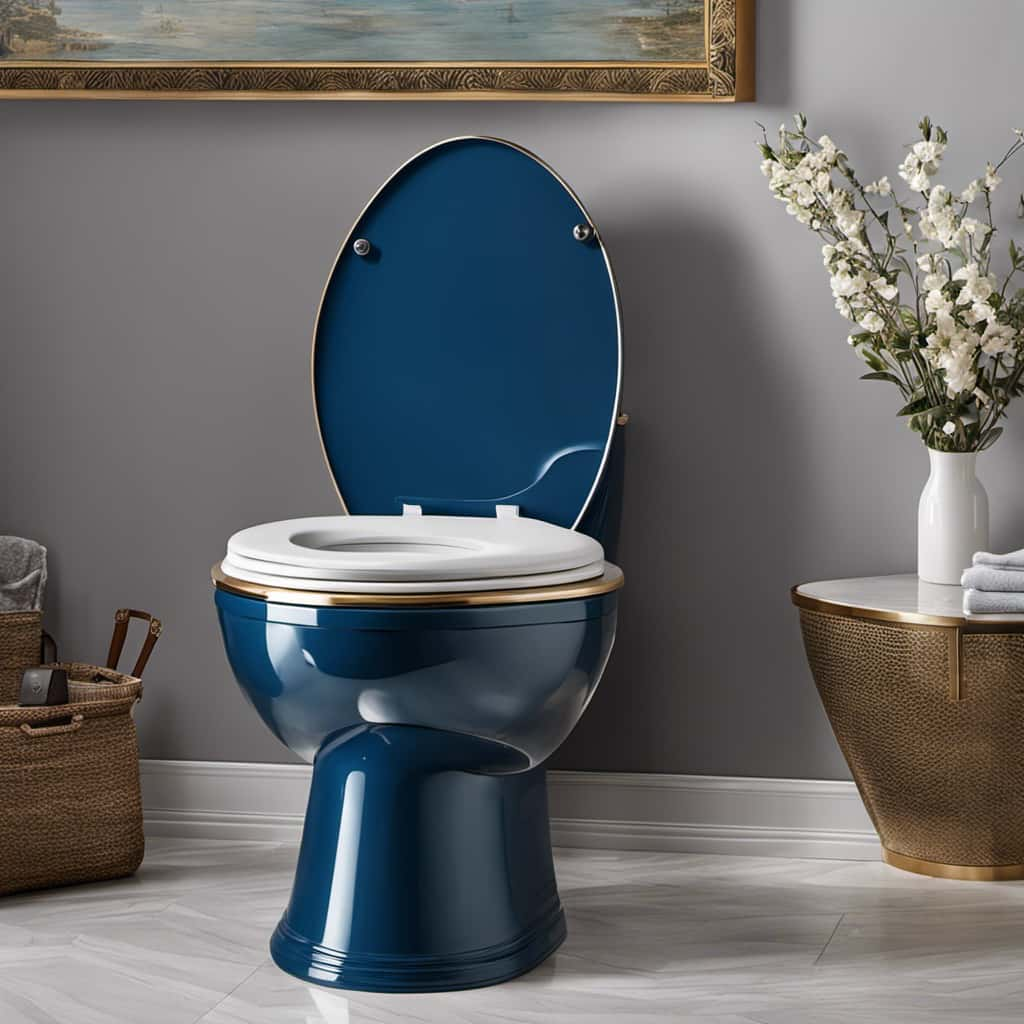
Porcelain is a durable and sturdy material that’s resistant to stains and scratches. It’s commonly used in high-end toilets due to its elegant appearance and longevity.
Plastic, on the other hand, is a more affordable option and is commonly found in lower-end toilets. While plastic may not be as durable as porcelain, it’s still a reliable material that can withstand everyday use.
Common toilet tank problems include cracks or leaks in the tank, which can be caused by aging or improper installation. Understanding the materials used in toilet tank construction can help in diagnosing and resolving these issues effectively.
The Science Behind Vinegar’s Cleaning Properties
Using vinegar as a cleaning agent in the toilet tank has been a popular choice due to its effective and natural properties. The science behind vinegar’s cleaning properties lies in its chemical reactions.
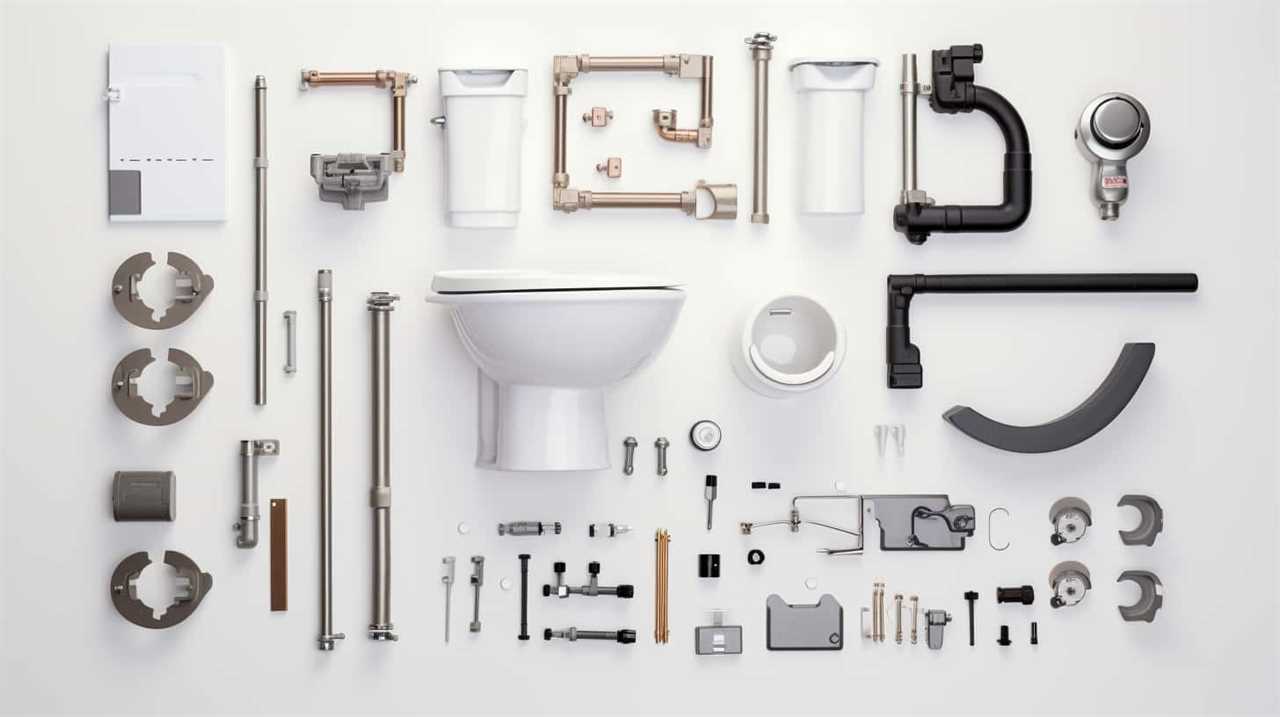
Vinegar contains acetic acid, which has antimicrobial and descaling properties. When vinegar comes into contact with dirt, grime, or mineral deposits in the toilet tank, it undergoes chemical reactions that help break down and dissolve these substances. Acetic acid acts as a natural solvent, effectively removing stains, limescale, and bacteria.
It also helps to neutralize odors in the toilet tank, leaving it fresh and clean. The acidic nature of vinegar makes it an excellent cleaner for removing stubborn stains and keeping the toilet tank in optimal condition.
Potential Risks of Using Vinegar in Toilet Tanks
We should be aware of the potential risks associated with using vinegar in our toilet tanks. While vinegar is generally safe for cleaning purposes, it can cause damage if used improperly. One of the main risks is the potential for corrosion. Vinegar is an acid, and if left in the toilet tank for an extended period of time, it can corrode the metal components, such as valves and connectors.
Additionally, using vinegar in toilet tanks can also pose risks for other household appliances. For example, if vinegar residue enters the plumbing system, it can cause damage to pipes and fixtures. It’s also important to note that vinegar may not be effective in removing stubborn stains from toilet tanks.

In the next section, we’ll discuss tips for safely cleaning your toilet tank with vinegar, taking into consideration these potential risks.
Tips for Safely Cleaning Your Toilet Tank With Vinegar
For a safe and effective cleaning of your toilet tank, it’s recommended to use a small amount of vinegar. When using vinegar to clean your toilet tank, it’s important to ensure that you use the right concentration.
A vinegar concentration of 5% to 10% is generally considered safe for cleaning purposes. Using a higher concentration may cause damage to the seals and other components of your toilet tank.
To clean your toilet tank with vinegar, start by turning off the water supply and flushing the toilet to empty the tank. Then, pour the vinegar into the tank, making sure to cover the surfaces that need cleaning. Allow the vinegar to sit for a few hours or overnight to break down any mineral deposits or stains.

Afterward, scrub the tank with a toilet brush and flush the toilet to rinse away the vinegar residue.
Transitioning into the subsequent section about alternative cleaning solutions, there are other options available for cleaning your toilet tank if you prefer not to use vinegar.
Alternative Cleaning Solutions for Toilet Tanks
While vinegar is a popular and effective option for cleaning toilet tanks, there are alternative cleaning solutions available that can also be used. It’s important to consider toxicity concerns and the environmental impact when choosing alternative cleaning solutions.
One option is hydrogen peroxide, which is a powerful disinfectant and can effectively remove stains and odors from the toilet tank.
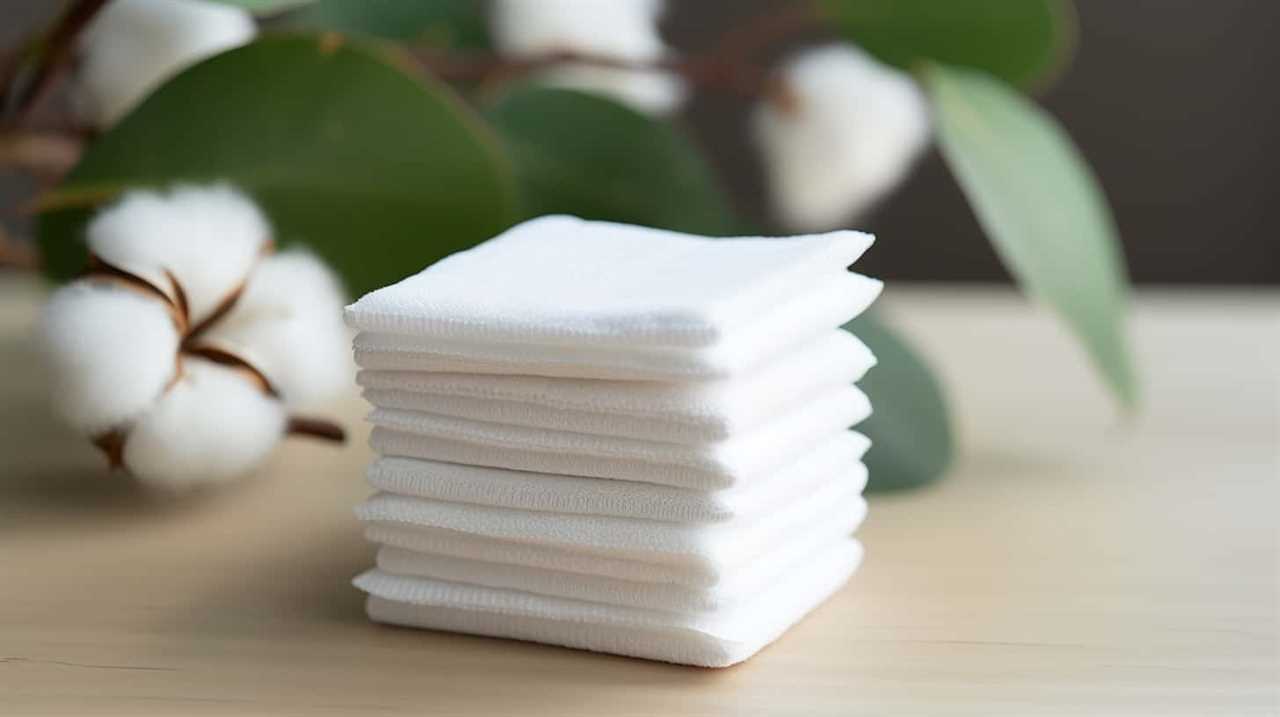
Another alternative is baking soda, which is non-toxic and environmentally friendly. Baking soda can be mixed with water to form a paste and applied to the inside of the tank to remove grime and stains.
Additionally, citric acid can be used as a natural cleaner for toilet tanks. It’s non-toxic and has antibacterial properties, making it an effective alternative to vinegar.
Frequently Asked Questions
Can I Use Vinegar to Clean Other Parts of the Toilet Besides the Tank?
Yes, you can use vinegar to clean other parts of the toilet besides the tank. Vinegar is an eco-friendly cleaner that is effective for cleaning the toilet bowl and other surfaces in the bathroom.
Is It Safe to Mix Vinegar With Other Cleaning Products When Cleaning the Toilet Tank?
Mixing vinegar with other cleaning products when cleaning the toilet tank has both pros and cons. It can enhance the cleaning power but may also create harmful fumes. Safety precautions, such as proper ventilation and avoiding ammonia-based cleaners, are necessary.
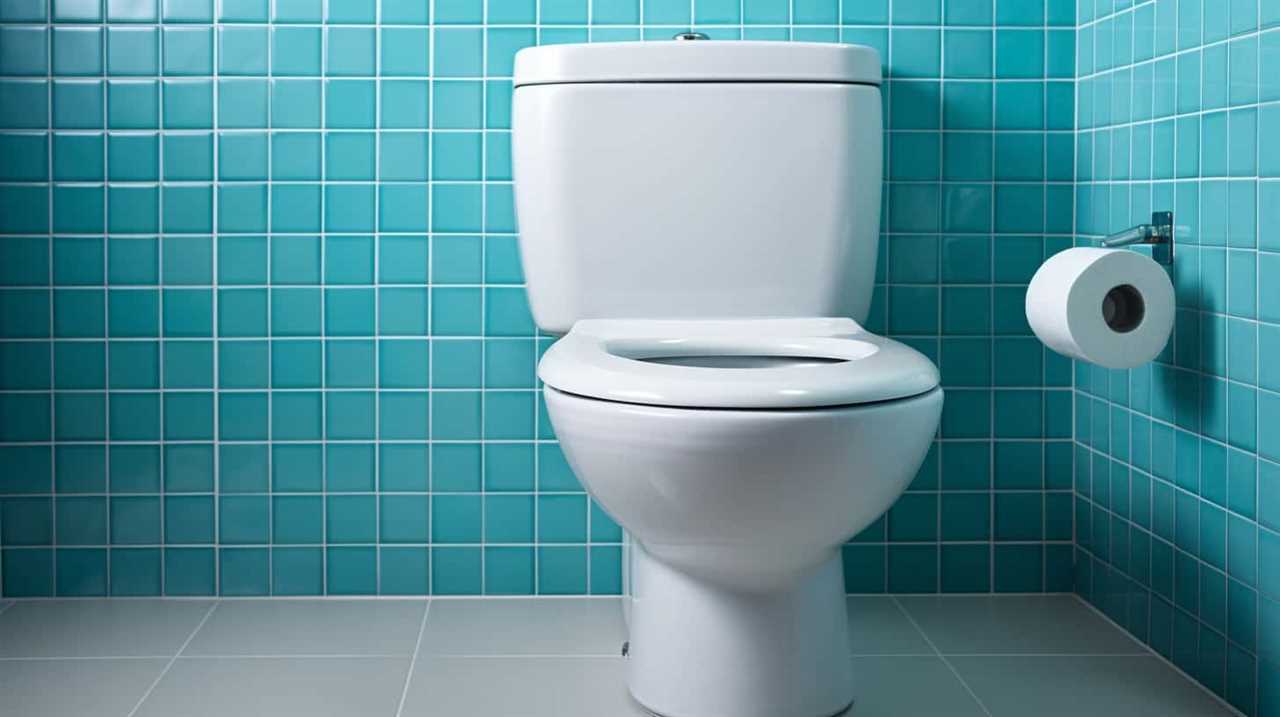
How Often Should I Clean My Toilet Tank With Vinegar?
Toilet tank maintenance is important to ensure optimal performance. The best cleaning technique involves using vinegar regularly. It helps remove mineral deposits and keeps the tank clean. We recommend cleaning the toilet tank with vinegar at least once a month.
Will Vinegar Remove Hard Water Stains From the Toilet Tank?
Using vinegar as a natural cleaner can effectively remove hard water stains from the toilet tank. It’s a safe and efficient method that won’t harm the tank. Say goodbye to those stubborn stains!
Can I Use Vinegar to Clean a Toilet Tank if It Has a Septic System?
Using vinegar to clean a toilet tank is safe for septic systems. It is effective at removing stains and odors without damaging the tank. Regular cleaning with vinegar can help maintain the functionality of your septic system.
Conclusion
In conclusion, while vinegar can be an effective and safe cleaning solution for toilet tanks, it’s important to use it with caution. Its acidic nature can potentially damage certain components of the tank over time.

To ensure safe cleaning, dilute the vinegar with water and avoid prolonged exposure. Alternatively, consider using other cleaning solutions specifically designed for toilet tanks.
Remember, a clean toilet tank is the key to a fresh and hygienic bathroom experience.
